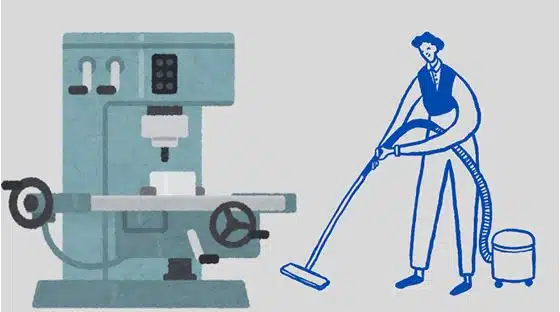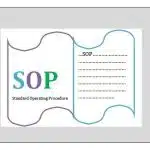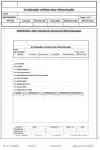Learn about the cleaning validation protocol for production area of cleaning validation process in the pharmaceutical industry.
Table of Contents

1. Introduction
This protocol defines the procedures for cleaning validation of the production area in accordance with Good Manufacturing Practices (GMP) and regulatory guidelines. Cleaning validation ensures that the equipment, tools, and production environment meet the required standards for cleanliness and are free from contaminants such as residues of active pharmaceutical ingredients (APIs), excipients, and cleaning agents.
2. Purpose
The purpose of this cleaning validation protocol is to establish that the cleaning procedures used in the production area consistently meet cleanliness requirements, ensuring no cross-contamination, residue, or microbiological contamination that may impact patient safety and product quality.
3. Scope
This protocol applies to all production equipment, including mixing vessels, tablet presses, granulators, blenders, packaging lines, and any other equipment used in the production of pharmaceutical products.
4. Regulatory and Industry Standards
4.1 Current Good Manufacturing Practices (cGMP)
4.2 International Council for Harmonization (ICH) guidelines
4.3 US FDA guidelines for cleaning validation
4.4 European Medicines Agency (EMA) guidelines
4.5 WHO guidelines for pharmaceutical cleanroom environments
5. Responsibilities
5.1 Quality Assurance (QA): Responsible for protocol approval, review, and overall oversight of the validation process.
5.2 Production: Responsible for conducting cleaning operations and maintaining records of cleaning procedures.
5.3 Validation Team: Responsible for conducting the validation, sampling, and testing.
5.4 Laboratory: Responsible for analysis of cleaning validation samples to ensure compliance with specified limits.
6. Cleaning Process Overview
6.1 Cleaning Procedure: This includes manual or automated cleaning methods such as washing, rinsing, and drying of equipment and surfaces.
6.2 Cleaning Agents: Identification of cleaning agents used, including solvents, detergents, and water. These agents must be validated for compatibility with equipment and effective in removing residues.
6.3 Clean Area: The areas where the production equipment is cleaned should be designated as “clean zones” with restricted access during cleaning.
6.4 Cleaning Frequency: Defines the cleaning frequency based on product changeover, batch size, and risk of cross-contamination.
7. Cleaning Validation Strategy
7.1 Initial Assessment
7.1.1 Review the previous cleaning history of the equipment.
7.1.2 Identify the potential risks associated with cross-contamination for each product.
7.1.3 Ensure that all production equipment and surfaces are assessed for suitability in terms of design, materials, and cleaning ability.
7.2 Sampling Plan
7.2.1 Define the types of samples to be collected (e.g., swab, rinse).
7.2.2 Identify critical areas for sampling, including surfaces that contact product, and other potential areas of residue build-up.
7.2.3 Determine sampling sites based on risk assessment (e.g., inside of equipment, product-contact surfaces, and adjacent areas).
7.2.4 Sample locations should include both visible and hidden areas that could retain residues.
7.3 Acceptance Criteria
Define acceptance criteria for cleaning validation based on the following:
7.3.1 The maximum allowable residue limits of active ingredients (API), excipients, cleaning agents, and microbial contamination.
7.3.2 Limits for cross-contamination between products (e.g., based on 10 ppm or 1/1000th of the normal therapeutic dose of the next product).
7.3.3 Microbial contamination levels, if applicable, should meet the requirements for cleanroom classification and risk assessment.
7.4 Equipment and Cleaning Agents
7.4.1 Verify that the cleaning agents used are suitable for removing residues.
7.4.2 Validate the cleaning agents for efficacy, compatibility with the equipment, and safety for use in a pharmaceutical environment.
7.5 Analytical Testing
7.5.1 Use validated methods such as High Performance Liquid Chromatography (HPLC), Total Organic Carbon (TOC) analysis, and microbiological testing to verify the cleanliness of surfaces.
7.5.2 Rinse samples may be tested for residual cleaning agents, APIs, or excipients.
7.5.3 Surface samples will be tested using swab or wipe sampling methods and analyzed accordingly.
7.6 Training and Competence
7.6.1 Ensure that all personnel involved in cleaning operations and cleaning validation are trained on GMP standards, cleaning procedures, and analytical techniques.
7.6.2 Document training activities, including refresher training as necessary.
8. Cleaning Validation Protocol Methodology
8.1 Pre-Validation Requirements:
8.1.1 Conduct a risk assessment for each equipment and area based on the product line, equipment design, and historical data.
8.1.2 Establish the baseline cleaning conditions, including agent selection, cleaning method, and the time required for effective cleaning.
8.1.3 Conduct a preliminary cleaning test to determine the cleaning agent and method effectiveness.
8.2 Validation Execution:
8.2.1 Perform cleaning validation under actual production conditions.
8.2.2 Complete a series of cleaning and sampling cycles across different product changeovers.
8.2.3 Document all procedures, findings, and any deviations observed.
8.3 Sample Collection and Analysis:
8.3.1 Collect samples from swabs, rinse waters, and other surfaces as per the sampling plan.
8.3.2 Test the samples for chemical residues (API, excipient, detergent) and microbial contamination.
8.3.3 If any sample exceeds acceptance criteria, identify the source of contamination and perform further investigations.
8.4 Results Evaluation:
8.4.1 Compare analytical results against the predefined acceptance criteria.
8.4.2 If results meet the criteria, conclude that the cleaning process is validated.
8.4.3 If deviations occur, reassess the cleaning method and perform additional cleaning or optimization as needed.
9. Documentation and Reporting
9.1 Cleaning Validation Report:
The validation report must include:
9.1.1 A summary of the validation protocol.
9.1.2 A description of the cleaning procedures and cleaning agents used.
9.1.3 Results from sampling and analytical testing.
9.1.4 Compliance with acceptance criteria.
9.1.5 Any deviations or corrective actions taken.
9.1.6 Conclusions and recommendations for routine cleaning.
9.2 Change Control:
9.2.1 Any modifications to the cleaning process or procedures should be subjected to a change control process and documented accordingly.
9.3 Review and Approval:
9.3.1 Final validation results must be reviewed and approved by the QA team.
10. Conclusion
Upon successful completion of the cleaning validation protocol, the production area and equipment will be considered validated for cleaning procedures, ensuring compliance with GMP and regulatory requirements. This will guarantee that the equipment and environment are consistently free from contaminants, ensuring the safety and quality of pharmaceutical products.
11. Annexes
11.1 Annex-1: Cleaning SOPs and Instructions
11.2 Annex-2: Equipment and Surface Risk Assessment
11.3 Annex-3: Sampling Locations and Reasons
11.4 Annex-4: Test Methods and Acceptance Criteria
Related Topics:
Pharmaceutical Validation Program

Abdus Sobhan Salim is professional experienced pharmacist in pharmaceuticals, author and founder of pharmabossbd.com, the first Bangladeshi pharmaceutical blogger since 2019.




People find it much more appealing to view naked carcasses than covered ones.
And one of the things that appeals is the sense of vulnerability, such as when a woman plays play and feels a little uncomfortable or exposed while she is nude.
When both events are in the shield, it increases the connection of
sex. When their companion is susceptible, supremacy tends to appeal to some folks especially.
And let’s not forget about the nude video: they really go all out
when it comes to showing off whatever, focusing on insertion, and on private elements. https://foxla.onelink.me/s6uV?pid=Web&c=in_article&af_web_dp=https%3A%2F%2Futahsyardsale.com%2Fauthor%2Fmontestepp%2F
Since the admin of this web site is working, no question very quickly it will be renowned, due to its quality contents.